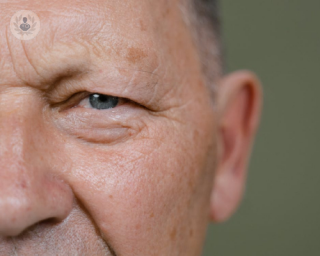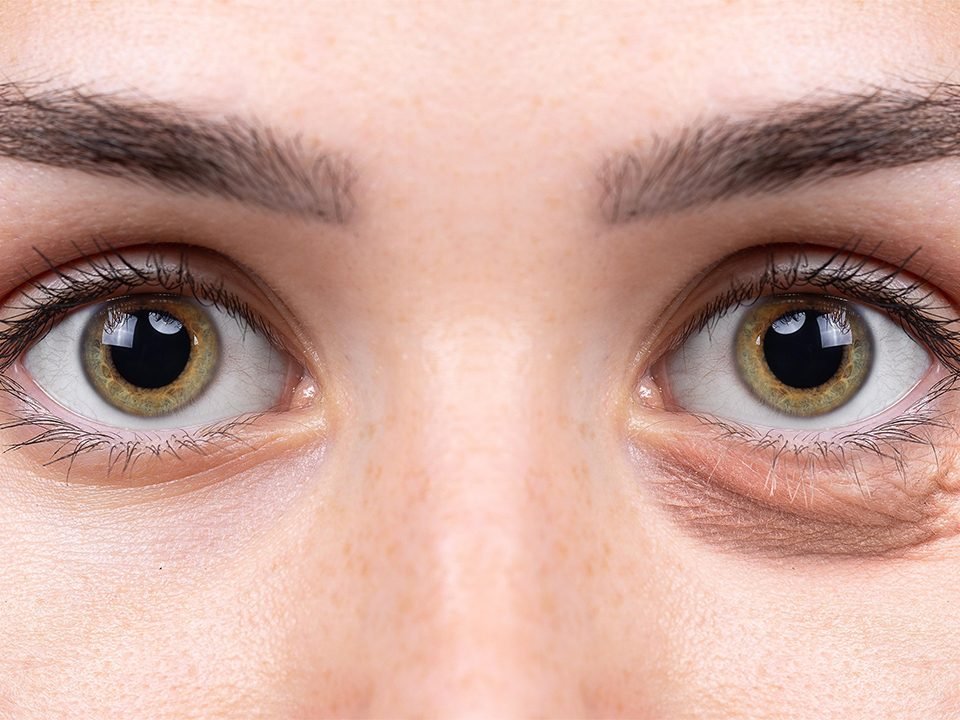Dry eye, also known as dry eye syndrome is an eye condition in which the surface of the eye is not adequately lubricated by the tear film . Nearly 30% of the population suffers from it, and it is more common in women and older people. Tears are essential for maintaining eye health and comfort, as they not only lubricate the surface of the eye, but also help protect it from infection and maintain clear, sharp vision.
The main cause of dry eye is usually a imbalance in tear composition or decreased tear production . Tears are made up of three layers: a lipid (fat) layer that prevents tears from evaporating quickly, an aqueous layer that provides most of the tear supply, and an aqueous layer that provides most of the water supply. nutrients and oxygen, and a mucous layer that helps the tears adhere evenly to the surface of the eye.
What are the causes of dry eye?
- Reduced tear production: as we age, tear production may decrease . It can also be caused by medical conditions such as rheumatoid arthritis, Sjogren's syndrome and some autoimmune diseases.
- Imbalance in tear composition: If tears do not have the right combination of lipids, water and mucin, the surface of the eye can dry out quickly.
- Environmental factors Exposure to certain environmental conditions such as dry air, wind, air conditioning and prolonged use of digital screens can increase tear evaporation and contribute to dry eye.
- Contact lens wear: Contact lens wearers may experience dry eye symptoms as a result of the interaction between the lenses and the ocular surface.
- Medicines Taking some medications, such as antihistamines, decongestants and blood pressure medications, can reduce tear production.
- Hormonal changes: hormonal fluctuations, such as those that occur during pregnancy, menopause The production of tears may be influenced in cases of hormonal imbalance, or in cases of hormonal imbalance.
- Eye diseases: some diseases, such as Blepharitis (swelling of the eyelids), evaporative dry eye syndrome and meibomian gland dysfunction may contribute to dry eye.
Symptoms and signs of dry eye.
The main signs of dry eye are as follows:
- Itching, stinging and burning of the eyes.
- Foreign body sensation, like "grit" in the eye.
- Blurred vision that needs blinking to improve.
- Keratoconjunctivitis.
- Corneal keratitis.
- Conjunctival injection.

What is Intense Pulsed Light treatment?
Intense pulsed light IPL treatment is a technique that has gained popularity in the field of ophthalmology in recent years.
Although initially used to address dermatological problems, such as facial redness or vascular lesions, its application has expanded to the treatment of dry eye. IPL uses pulses of filtered light to stimulate Meibomian glands responsible for producing the lipid layer of the tear film, which helps to maintain moisture on the surface of the eye.
Treatment takes place between three and four sessions depending on the age and severity of the particular case. Each session lasts between five and ten minutes . There should be a two-week interval between each procedure.
It is advisable to repeat the treatment once a year. It has no side effects, is performed on an outpatient basis and can be applied to any skin type.
How does IPL work?
During an IPL session for dry eye, a conductive gel is placed on the skin around the eyes and protective goggles are worn to ensure safety. The IPL device is then applied to the skin and emits controlled pulses of intense light.
This light gently penetrates the skin and is selectively absorbed by the meibomian glands, stimulating their function and promoting better tear film quality.
What are the benefits of IPL treatment?
- Effectiveness: Various studies and research have shown that IPL treatment can significantly improve dry eye symptoms by stimulating the production of essential tear lipids. The eye is now more stable and better lubricated.
- Non-invasive: Unlike some surgical procedures for dry eye, IPL treatment does not involve incisions or stitches. It is a non-invasive procedure which is performed on an outpatient basis and generally requires no recovery time.
- Minimal side effects - In the hands of a qualified professional, the side effects of IPL are usually minimal. Slight temporary redness may appear on the treated skin, but usually disappears quickly.
- Holistic approach: IPL treatment not only addresses dry eye problems, but can also help with other skin conditions such as facial redness, making it a versatile option.













